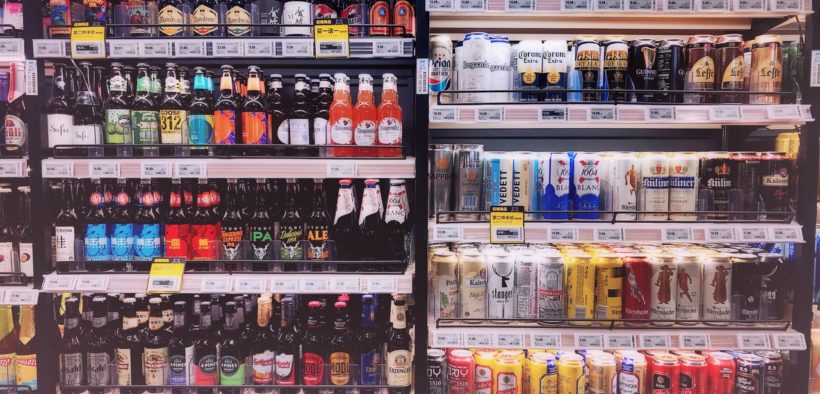Read the first part of Beverage Distribution: Bottles, Barrels, and the Business here.
Other beverage distribution possibilities
Many beverages (dairy beverages being a possible exception) have a sufficiently long shelf life to allow them to be stocked and sold through outlets other than large, high turnover retail chains. Convenience stores can stock different brands and sell them at a premium to consumers. These stores often operate outside the normal supermarket hours, catering to consumers who accept or even seek the “single-serve” purchase, albeit with its higher price. Vending machines use a similar logic. The difference however is that machines function 24 hours and require little or no manual intervention. The incessant thirst of many new consumers for new beverages combined with trends to source locally and naturally opens doors for smaller producers in the bars and restaurants of their own community. They often have a stronger card to play here than larger producers looking for bulk orders, although subsequent expansion may be another kettle of fish.
The Beer Game
No discussion of beverage distribution would be complete without a reference to the beer distribution game (or simply the “beer game”). This game was invented in 1960 by Jay Wright Forrester at the MIT Sloan School of Management. The game came from Forrester’s work on system dynamics. Beer distribution turned out to be a well-suited case for the game.
The beer game is played by participants as a four-stage supply chain. In the game, a factory produces beer which then passes through a three-stage distribution system to finally reach the consumer. However, the participants are restricted in their ability to share information between the different stages. The lack of information makes it difficult to understand the real levels of demand for beer. Participants at a given stage cannot control the actions of participants at other stages, but they can influence them by placing orders for delivery of beer. This set-up can rapidly give rise to erratic and exaggerated orders for beer between the different distribution and production stages, a phenomenon also known as the “bullwhip effect” and present in many other industries.
Participants find themselves handicapped by a desire for high safety stock levels, poor customer service, suboptimal capacity utilisation, inaccurate demand forecasting, and low levels of trust between the different distribution stages. In the beer distribution and other industry sectors in real life, these problems may also be compounded by overly focusing on local optimisation, mistaking orders instead of customer demand as the supply driver, variable lead times, and inconsistent pricing policies.
Beverage distribution risks
Beverage distribution is not without its hazards. Besides the challenges of forecasting demand and responding quickly enough to changes in consumer preferences, examples of risks are:
- Failure to comply with regulations
Beverage production and distribution, like those of food, are monitored by different regulatory bodies. The bigger the operation, the greater the risk of non-compliance for its customers, its partners, and its reputation and financial health. Production, storage, and transport must all observe regulations, including ingredients, production processes, workplace safety and health, and environmental impact. - Packaging hazards
Beverages can interact with the containers that hold them. Chemicals in packaging can be inappropriately can be released into beverages through shocks, vibration, and variations in temperature, or simply through contact with fluids. Inert packaging made of glass or stainless steel may require special arrangements for recycling. Post distribution, packaging can become litter that has the producer’s brand stamped on it, identifying the producer as the root cause of the litter. - Unethical sourcing and production
Distributors of unethically sourced or produced beverages may find themselves tarred by the same brush as the producers. Tropical fruits used to make exotic beverages are one example, with the danger of ingredients being sourced in poorer regions whose workforces may be underpaid and underage.
Beverage distributor priorities
Retail price pressures and competition within the beverage industry mean that operating cost reduction is often a key driver of supply chain projects in general and beverage distribution specifically. Improvements in visibility and metrics are also popular goals. The beer game (see above) shows how critical end-to-end communication and visibility can be in a supply chain and its distribution network. The advantages can include higher efficiency, lower stocks, and better fulfillment.
On the other hand, a recent survey by Porter & Associates3 on food and beverage companies indicated that third-party logistics strategies and e-commerce initiatives seemed to be lower priorities. Labour management systems and ERP systems did not garner much enthusiasm either. This is a paradox given the overall goal of lowering operating costs and increasing efficiency. Both labour and transportation management systems could be quick wins for different beverage producers and distributors.
Technology-driven initiatives to improve results
While experience and judgment are still critical for beverage distribution success, appropriate use of technology is likely to differentiate leaders from also-rans.
- Better forecasting and optimisation
Optimisation algorithms, simulations, and “what-if” analyses can be run faster and more reliably in software than manually. Predictive and prescriptive analytics are now an affordable reality with application and cloud service vendors offering high-performance, low-outlay solutions. Beverage distributors and producers can leverage big data like any other industry sector, using analytics to derive insights and recommendations for choices and action. - Multi-echelon inventory optimisation
Although good communication can do a lot to reduce unnecessary safety stocks, more is needed to combat the inefficiencies created by siloed distribution management, separating beverage stocks by type or location for example. MEIO considers all levels and locations of inventory in a distribution network to identify the best places to hold stock (possibly within delivery vehicles, not just in static warehouses) to keep inventory as low as possible without undue impact on customer satisfaction. - Integrated business planning
Beverage distributors have many sources of data from which to generate their business planning. Sales, marketing, operations, and finance are examples. However, teams may be using different systems to process their own part of the data in isolation from other departments. An integrated business planning software platform can help develop plans that make best use of total resources for the highest effectiveness in reaching business goals. When such software is cloud-based, authorised users can access it when they are in the office, on the road, or anywhere else with a mobile or internet connection.
Conclusion
Just as “location, location, and location” are often cited as the three most important things in property sales, “distribution, distribution, and distribution” could be held to be the three most important factors in the beverage industry. Distribution channels can be diverse and can present many opportunities for optimisation while dealing with price pressure from retailers and battling with competitors for more market share. The beverage distribution industry has as much potential as any other to take advantage of advances in supply chain and logistics, if the companies in the industry adopt the new approaches and technology that underpin those advances.


























































Follow us on social media